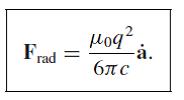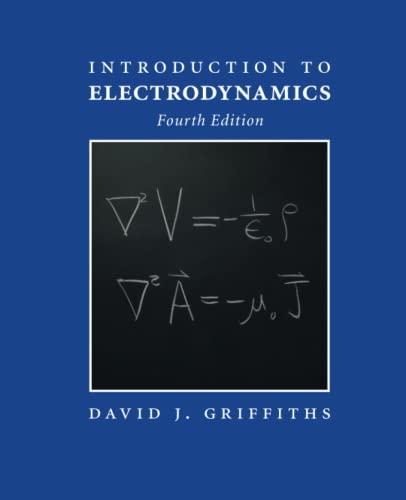With the inclusion of the radiation reaction force (Eq. 11.80), Newtons second law for a charged particle
Question:
With the inclusion of the radiation reaction force (Eq. 11.80), Newton’s second law for a charged particle becomes

where F is the external force acting on the particle.
(a) In contrast to the case of an uncharged particle (a = F/m), acceleration (like position and velocity) must now be a continuous function of time, even if the force changes abruptly. (Physically, the radiation reaction damps out any rapid change in a.) Prove that a is continuous at any time t, by integrating the equation of motion above from ![]() and taking the limit
and taking the limit ![]()
(b) A particle is subjected to a constant force F, beginning at time t = 0 and lasting until time T . Find the most general solution a(t) to the equation of motion in each of the three periods: (i) t < 0; (ii) 0 < t < T ; (iii) t > T .
(c) Impose the continuity condition (a) at t = 0 and t = T . Show that you can either eliminate the runaway in region (iii) or avoid preacceleration in region (i), but not both.
(d) If you choose to eliminate the runaway, what is the acceleration as a function of time, in each interval? How about the velocity? (The latter must, of course, be continuous at t = 0 and t = T .) Assume the particle was originally at rest: v(−∞) = 0.
(e) Plot a(t) and v(t), both for an uncharged particle and for a (nonrunaway) charged particle, subject to this force.
Reference equation 11.80

Step by Step Answer:






